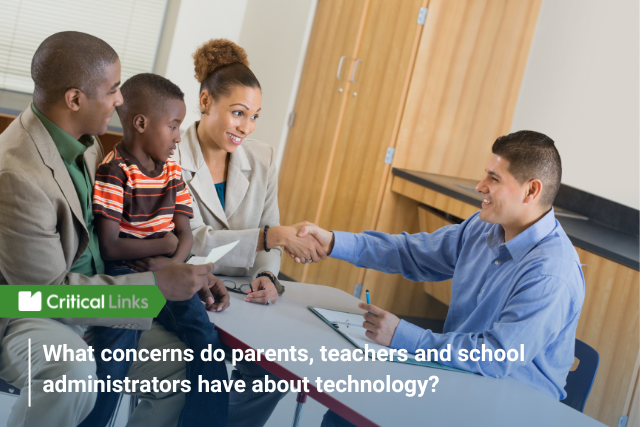
What concerns do parents, teachers and school administrators have about technology
The integration of technology in education is a highly debated topic. While there are enthusiastic educators who recognize its potential to enhance the learning experience, there are also concerns about its impact on students. In this article you can find some common concerns raised by parents and teachers regarding the use of technology in education and provides strategies to overcome these challenges.
- Distractions and Inappropriate Content:
One of the primary concerns revolves around the potential for distractions and exposure to inappropriate content. The vast expanse of the internet, coupled with social media platforms, can easily divert students’ attention away from educational activities. To address this, parents should establish clear guidelines for device usage and monitor the content their children consume. Teachers can implement strategies such as incorporating engaging educational content and interactive activities to keep students focused on the learning objectives. School administrators should find ways to ensure that all content accessed by students is pre-authorized by the school.
- Overuse and Lack of Balance:
Another concern is the excessive use of technology, leading to a lack of balance in students’ lives. Parents play a vital role in setting healthy boundaries and ensuring that technology use is balanced with other activities such social interactions, and family time. Teachers can encourage a balanced approach by integrating technology with offline activities.
- Cybersecurity and Privacy:
The safety and privacy of students while using technology is a paramount concern. Parents and teachers need to educate children about responsible online behavior, emphasizing the importance of protecting personal information and avoiding suspicious websites or online interactions. School administrators should implement cybersecurity measures, including internet filters, firewalls, and regularly updated security software to safeguard students’ digital experiences.
As with many things in life, balance is key, and technology is no exception. While concerns about technology in the classroom are valid, they can be effectively managed with proactive measures and a balanced approach.
The power of whitelisting:
Whitelisting has emerged as a powerful tool to ensure safe and focused learning objective, providing a proactive approach to control and filter online content in educational settings. By creating a curated list of approved websites, applications, and online resources, schools can restrict access to only those websites and resources that are appropriate, creating a secure digital space for students.
Embracing the power of whitelisting enables schools to harness the full potential of technology while ensuring the well-being and academic growth of their students.
In conclusion, while technology may have potential risks (that can be avoided), it should not overshadow the immense benefits and opportunities that it brings to education. it is important to strike a balance, promoting responsible internet usage while harnessing the transformative power of technology to empower learners and prepare them for the challenges of the modern world.
